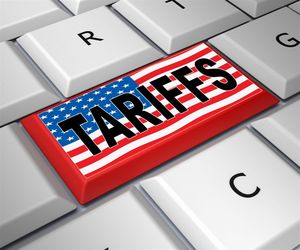
Bedding and comfort retailer Purple (NASDAQ: PRPL) met Wall Street’s revenue expectations in Q1 CY2025, but sales fell by 13.2% year on year to $104.2 million. The company’s full-year revenue guidance of $475 million at the midpoint came in 0.7% above analysts’ estimates. Its non-GAAP loss of $0.11 per share was 23.3% above analysts’ consensus estimates.
Is now the time to buy Purple? Find out by accessing our full research report, it’s free.
Purple (PRPL) Q1 CY2025 Highlights:
- Revenue: $104.2 million vs analyst estimates of $104.5 million (13.2% year-on-year decline, in line)
- Adjusted EPS: -$0.11 vs analyst estimates of -$0.14 (23.3% beat)
- Adjusted EBITDA: -$4.73 million vs analyst estimates of -$7.59 million (-4.5% margin, 37.7% beat)
- The company reconfirmed its revenue guidance for the full year of $475 million at the midpoint
- Adjusted EBITDA guidance for the full year of $5 million at the midpoint, well above expectations
- Operating Margin: -13.9%, up from -19.3% in the same quarter last year
- Free Cash Flow was -$25.31 million compared to -$19.85 million in the same quarter last year
- Market Capitalization: $71.8 million
"Our first quarter performance reflects continued progress against our strategic priorities to stabilize and strengthen the business, and position Purple for long-term success," said Rob DeMartini, CEO of Purple Innovation.
Company Overview
Founded by two brothers, Purple (NASDAQ: PRPL) creates sleep and home comfort products such as mattresses, pillows, and bedding accessories.
Sales Growth
A company’s long-term performance is an indicator of its overall quality. Any business can put up a good quarter or two, but the best consistently grow over the long haul. Unfortunately, Purple struggled to consistently increase demand as its $472 million of sales for the trailing 12 months was close to its revenue five years ago. This wasn’t a great result and is a sign of poor business quality.
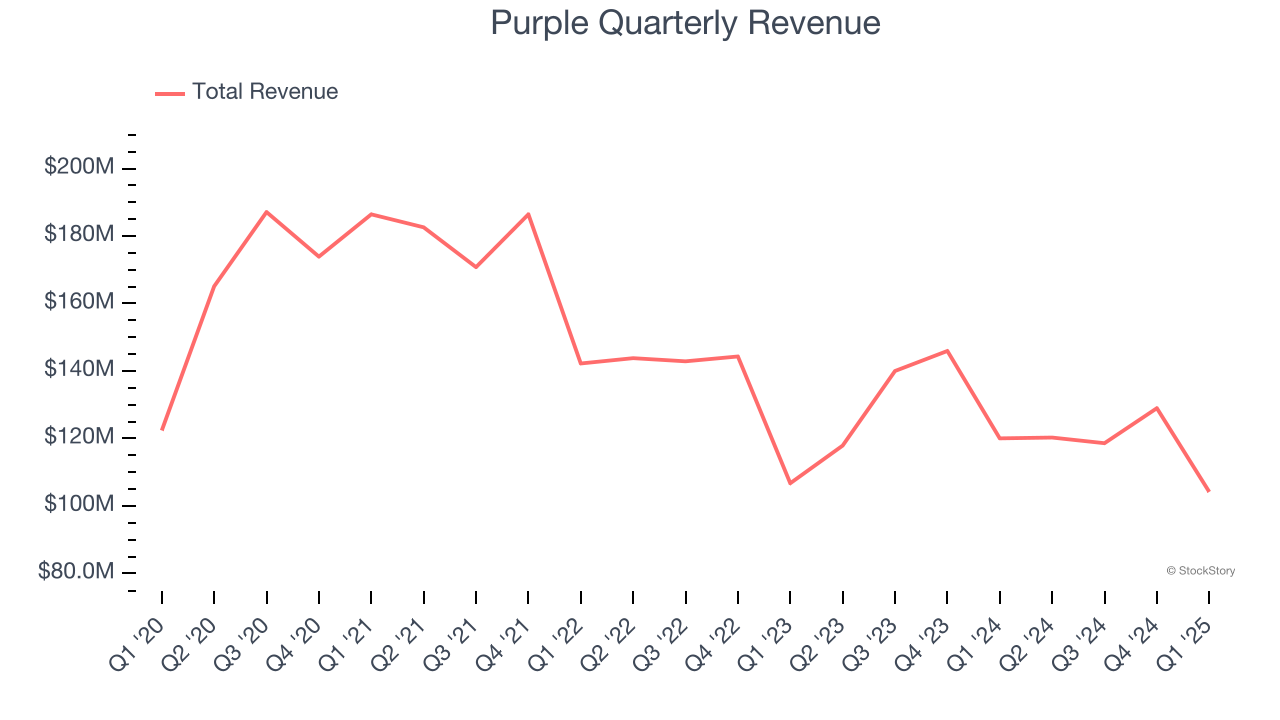
Long-term growth is the most important, but within consumer discretionary, product cycles are short and revenue can be hit-driven due to rapidly changing trends and consumer preferences. Purple’s recent performance shows its demand remained suppressed as its revenue has declined by 6.3% annually over the last two years. 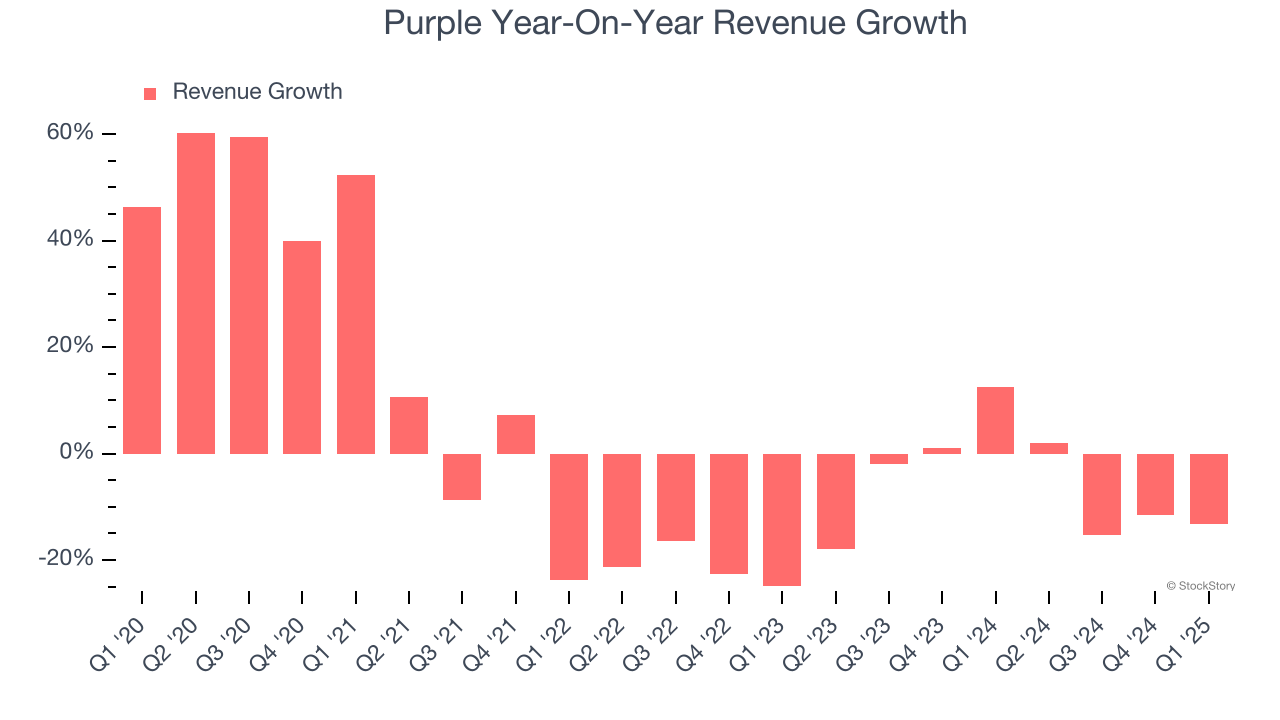
This quarter, Purple reported a rather uninspiring 13.2% year-on-year revenue decline to $104.2 million of revenue, in line with Wall Street’s estimates.
Looking ahead, sell-side analysts expect revenue to grow 1.5% over the next 12 months. Although this projection implies its newer products and services will catalyze better top-line performance, it is still below the sector average.
Today’s young investors won’t have read the timeless lessons in Gorilla Game: Picking Winners In High Technology because it was written more than 20 years ago when Microsoft and Apple were first establishing their supremacy. But if we apply the same principles, then enterprise software stocks leveraging their own generative AI capabilities may well be the Gorillas of the future. So, in that spirit, we are excited to present our Special Free Report on a profitable, fast-growing enterprise software stock that is already riding the automation wave and looking to catch the generative AI next.
Operating Margin
Operating margin is an important measure of profitability as it shows the portion of revenue left after accounting for all core expenses – everything from the cost of goods sold to advertising and wages. It’s also useful for comparing profitability across companies with different levels of debt and tax rates because it excludes interest and taxes.
Purple’s operating margin has been trending up over the last 12 months, but it still averaged negative 19.7% over the last two years. This is due to its large expense base and inefficient cost structure.
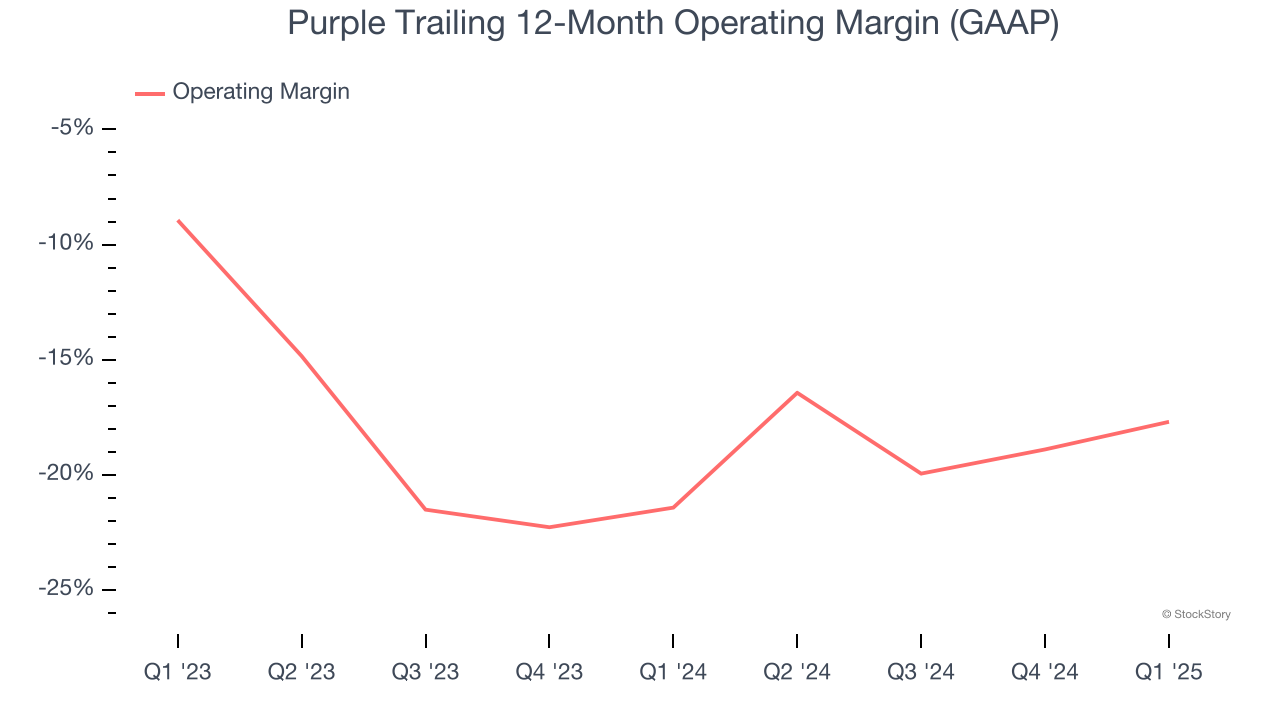
In Q1, Purple generated a negative 13.9% operating margin. The company's consistent lack of profits raise a flag.
Earnings Per Share
Revenue trends explain a company’s historical growth, but the long-term change in earnings per share (EPS) points to the profitability of that growth – for example, a company could inflate its sales through excessive spending on advertising and promotions.
Sadly for Purple, its EPS declined by 18.8% annually over the last five years while its revenue was flat. This tells us the company struggled because its fixed cost base made it difficult to adjust to choppy demand.
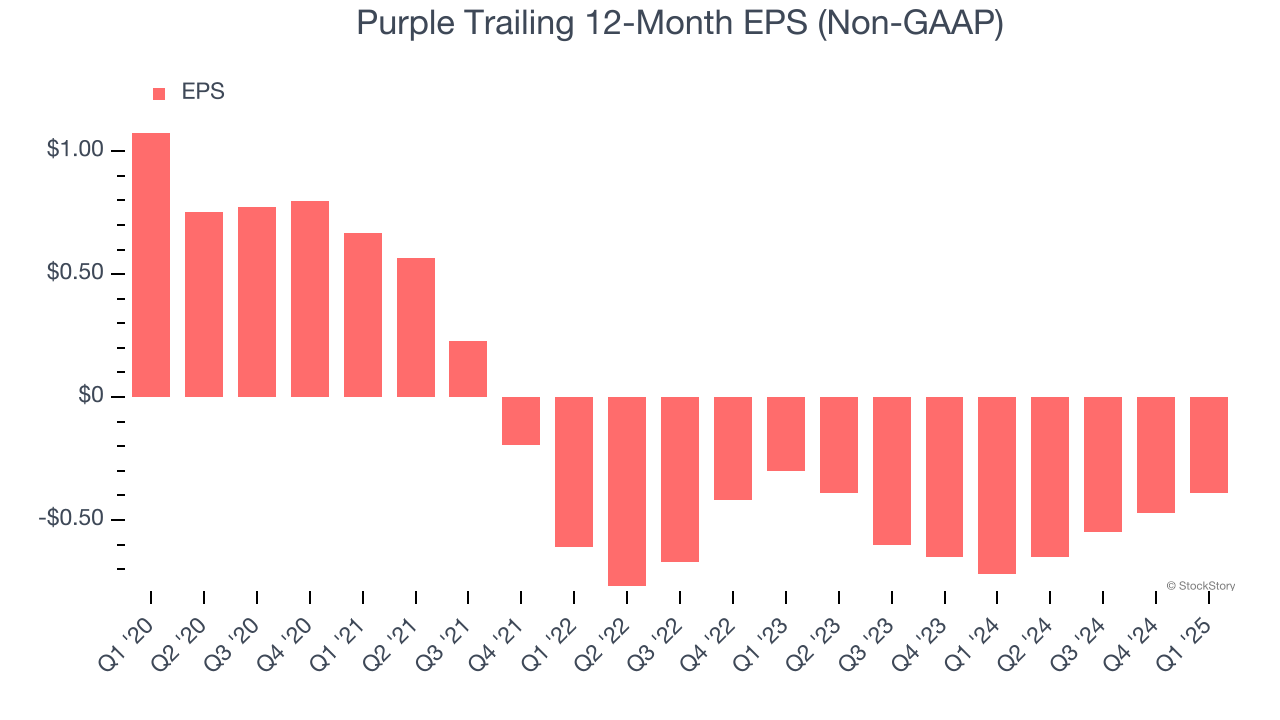
In Q1, Purple reported EPS at negative $0.11, up from negative $0.19 in the same quarter last year. This print easily cleared analysts’ estimates, and shareholders should be content with the results. Over the next 12 months, Wall Street is optimistic. Analysts forecast Purple’s full-year EPS of negative $0.39 will reach break even.
Key Takeaways from Purple’s Q1 Results
We were impressed by how significantly Purple blew past analysts’ EBITDA expectations this quarter. We were also glad its full-year revenue and adjusted EBITDA guidance both outperformed Wall Street’s estimates. Overall, we think this was a solid quarter with some key areas of upside, especially considering how choppy the macro is and how under pressure consumer discretionary purchases are. The stock traded up 20.3% to $0.91 immediately following the results.
Purple had an encouraging quarter, but one earnings result doesn’t necessarily make the stock a buy. Let’s see if this is a good investment. When making that decision, it’s important to consider its valuation, business qualities, as well as what has happened in the latest quarter. We cover that in our actionable full research report which you can read here, it’s free.





